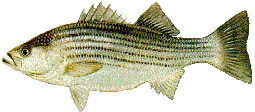CROSSES AND HYBRIDS
Different species - usually, but not necessarily, belonging to the same genus
— can be crossed; this rarely happens in the wild, but is a technique in common
use among aquarists. Crossbreeding, if successful, produces a hybrid combining the
characteristics of both parents. This hybrid will not receive a special name, but
will be known by the joint names of the two parents, separated by the sign "x,"
which simply indicates crossbreeding: Fish 1 x Fish 2. If the hybrid does not prove
sterile, it can interbreed in its turn, either with another hybrid or with a purebred.
After several generations, it is hard to tell exactly what you are dealing with!
This is true of certain species of plants and fish found in the aquarium trade:
the Latin name is frequently unreliable, and the plant or fish will have moved on
a long way from the original, recognized species and exhibit different characteristics.

|